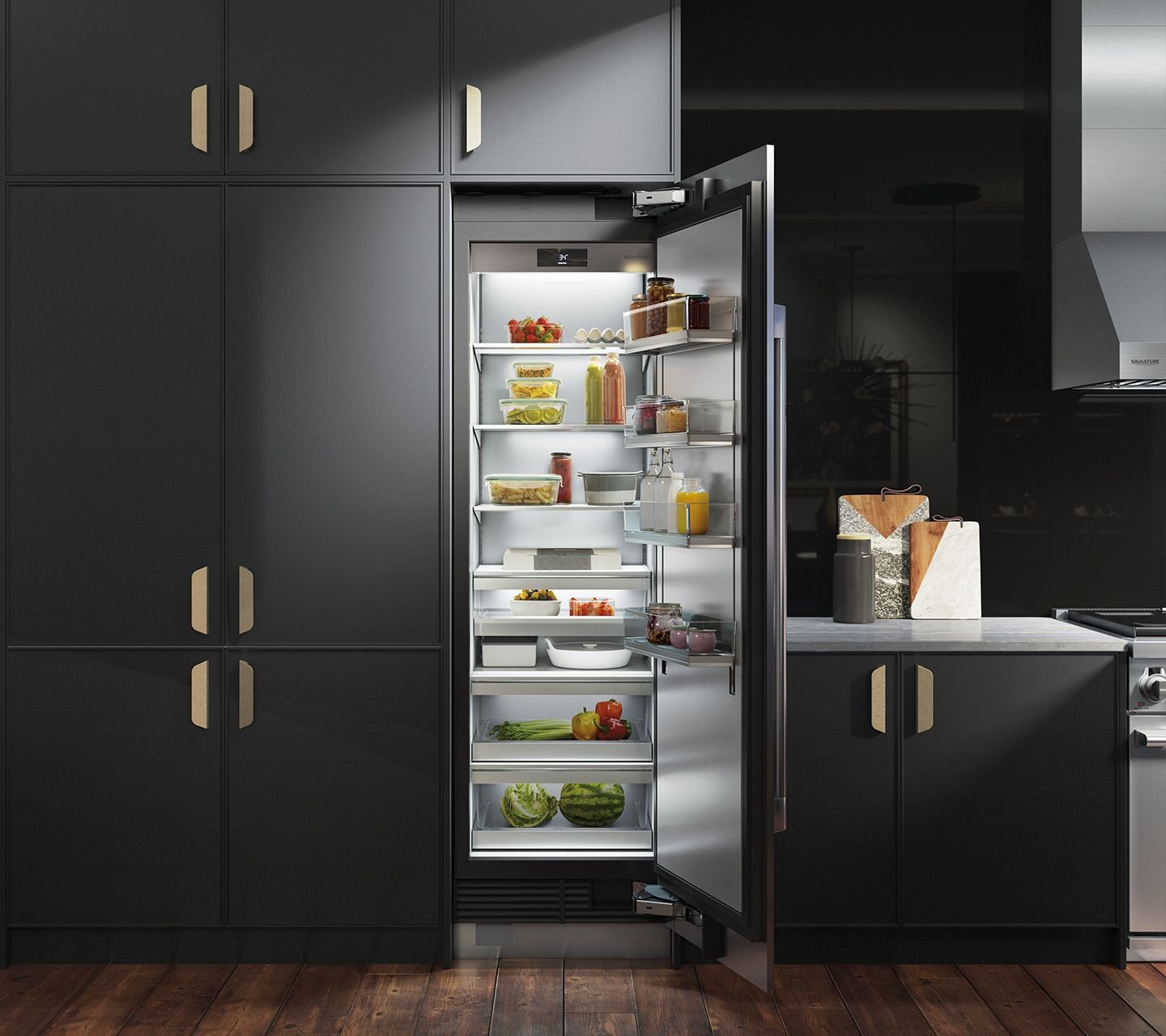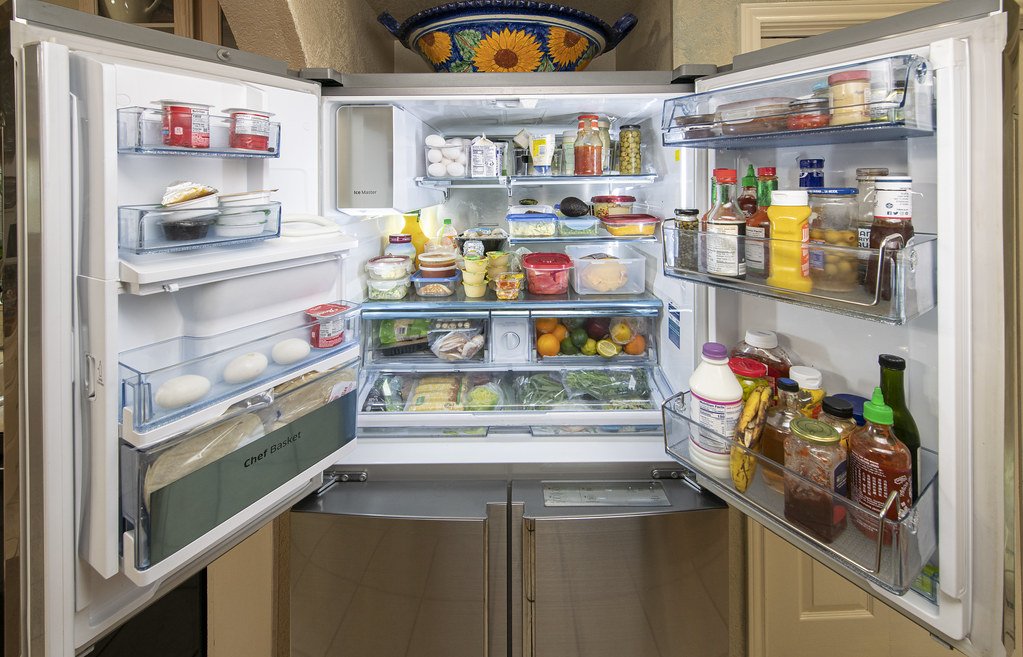A Recap of Trendsetting Refrigerator Styles
Hey there, fridge enthusiasts and kitchen aficionados! Can we just take a moment to appreciate how far our good ol' refrigerator has come? I mean, from being this big, clunky box in the corner to a sleek, stylish centerpiece of our kitchens, it's undergone a serious glow-up! And guess what? While the year is winding down, the fridge game isn’t slowing down any time soon. Let's dive into a recap of the world of 2023's coolest refrigerator styles - trust me, you won't believe what these bad boys can do now!
Panel Ready: Elevating Kitchen Aesthetics
While panel-ready appliances have been out for a while, they gained traction in 2023. Panel-ready appliances can be found for every major appliance and most small ones as well. Naturally, this includes your refrigerator. Panel-ready appliances are those that are unfinished and are ready to be covered with a panel that seamlessly matches the rest of your cabinetry. If you want a high-end kitchen, custom panels are the way to go.
Question: How might a hidden refrigerator transform the functionality of your kitchen space? We'd love to hear your ideas!
Invisible & Hidden: The Rise of Hidden Refrigerators
Even as pandemic restrictions have lifted, people have not shed their focus on staying home and being comfortable in their homes. Manufacturers are still responding to that need and are working to make refrigerators smarter, quieter, and as close to invisible as they can get.
Creating an invisible kitchen allows you to use the space in more than one way. It also helps with making smaller homes feel more open. The use of cabinetry faces and pocket doors creates the illusion of the refrigerator vanishing into the walls.
Handle-less Marvels: Embracing Futuristic Designs
Refrigerators are beginning to go handless. Although it’s not common yet, what started as recessing the handle into the door is now shifting towards no handles at all. Instead, manufacturers are looking at how to incorporate smart options like auto assist. Not only does this help the everyday user, but it also helps those who are disabled or injured to be able to get around with less trouble.
Splash of Color: The Vibrant Evolution of Refrigerators
At the beginning of the year, we pointed out the LG MoodUp. While we haven't seen anything as bombastic as that, we have seen other manufacturers bringing about colored appliances. we've seen them and talked about them for years with ovens, but now refrigerators are beginning to get some love as well in blacks, blues, reds and more unique colors like purples and teal. There have been other manufacturers that have done this, such as the European SMEG, but it's not a common occurrence in the American market.
Question: Which vibrant color would you pick for your refrigerator to express your kitchen's personality? Tell us your favorite hues!
Zones Redefined: Customizable Spaces for Organized Living
We’ve talked recently about the importance of refrigerator zones and how they affect your food’s life span. The design of your refrigerator is one way that this can be affected. Multi-door refrigerators offer a unique option to mix and match the type of space you need. They offer different zones that can be controlled from your phone as well as additional drawers and doors to allow you to better break down your fridge for your needs.
LED Illumination: Efficiency and Elegance Inside Your Fridge
While it might sound odd, LED lighting is starting to gain traction in the market. LED lighting throughout your refrigerator and the various compartments makes a difference on multiple levels. First off, it allows you to cut down on your power usage as LEDs are up to 90% more efficient. Second, it gives your refrigerator a modern and sleek appearance. Finally, it makes it easier to find items within your fridge, ensuring you don’t lose that delicious bottle of jam to the back of a shelf.
Smart Innovations: Cameras, Ice Filters, and Beyond
Cameras inside the refrigerator allow you to take stock of what you have even when you're out on the go. Instead of having to make a list of what you have at all times and trying to maintain that in your head, you can pull open your refrigerator app and check what's there. This doesn't necessarily get rid of your need for grocery lists or lists of what you need for different recipes, but it does help if you forget to check for an item or two before you leave. This continues to build momentum, and manufacturers are constantly trying to figure out something new. We look forward to what innovations the new year will bring us.
An interesting new feature that we noticed for the first time this year was filtered ice. While refrigerators making ice is nothing new, being able to get crystal clear ice is. Refrigerators are now being included with filtered water and ice as part of the system rather than having to be a specialized or aftermarket feature.
Question: Which smart feature - camera integration or filtered ice - would you find more beneficial in your daily kitchen routine? Let us know your choice and why!
And there you have it, a sneak peek into the dazzling world of 2023's coolest refrigerator trends! From seamless panel designs to invisible fridges and futuristic innovations, it's been a whirlwind of creativity in kitchen tech. By the way, if your trusty fridge or any major appliance needs a tune-up or repair, we at Appliance Rescue Service have your back! Whether it's fixing a stubborn ice maker or giving your appliances some TLC, our repair wizards are on standby. We're your go-to folks for keeping your kitchen tech running smoothly. Share your thoughts on these trends in the comments on our Facebook page, and remember, if your appliance needs some love, reach out to us at Appliance Rescue Service!



















